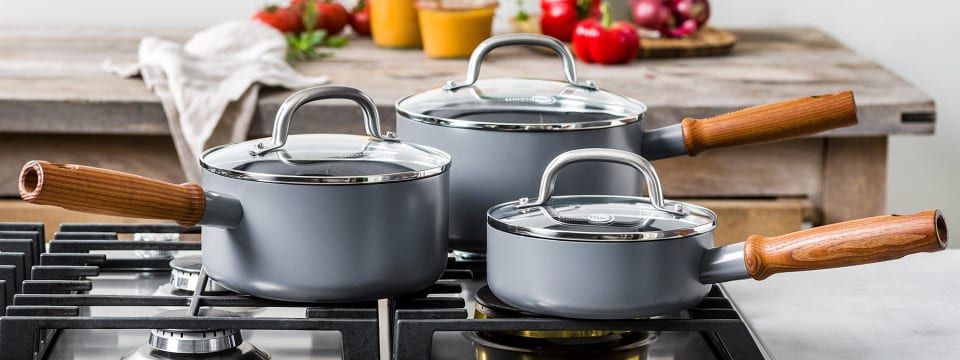How Cooking Pots Work to Cook Your Food
Key Take-aways from this Story
The Hidden Engine of Your Kitchen
When you turn on your stove and place a pot on it, you're triggering a controlled energy exchange. The pot doesn’t just sit there—it actively manages how your food cooks, using principles of physics, thermodynamics, and material science. Whether you’re boiling rice or searing meat, the pot is doing the heavy lifting beneath the surface.
Step One: Conduction Begins the Magic
At the heart of it all is conduction—the process of heat transfer through a solid. The heat from your burner (gas, electric, or induction) moves into the pot’s base and walls. That metal then transfers heat directly into the food or liquid inside.
The pot’s bottom surface is key—it absorbs and redistributes energy. A wider, flatter bottom gives more consistent results. Uneven bottoms cause hot spots, where some food burns while the rest stays raw.
Material Matters: Why Your Pot's Metal Counts
Different pots handle heat differently depending on what they're made of:

-Aluminum: Heats fast and evenly but doesn’t hold heat well.
-Stainless Steel: Tough and durable but not the best at heat conduction—often paired with copper or aluminum cores.
-Cast Iron: Heats slowly but retains heat incredibly well, ideal for slow cooking and searing.
-Copper: Excellent heat conductor, but expensive and reactive with some foods.
-Nonstick Coatings: Don't impact heat transfer much but reduce friction, so food releases easily.
Every choice you make—from pan to pot—impacts how the heat interacts with your food.
Steam, Pressure, and the Power of the Lid
The lid of a pot isn’t just there to prevent splatter—it’s a pressure and moisture control tool. When you cover a pot, you trap steam (vaporized water), which increases the internal pressure slightly and keeps temperatures consistent.
That steam helps:
-Cook food evenly, especially rice, stews, and legumes
-Prevent drying out
-Enhance flavor melding
In pressure cookers, this process is intensified. Sealing the lid fully allows steam to build dramatically, raising boiling points and cooking food faster and deeper.
Surface Contact and Cooking Behavior
Flat surfaces mean better searing. Rounded pots (like Dutch ovens) are better for slow, even cooking of liquids. Shallow pans give ingredients more contact with heat for quicker browning. Deep pots contain more moisture, ideal for boiling and stewing.
Cooking is really just the art of controlling heat. And your pot? It’s the channel.
From Raw to Ready: The Thermal Chain Reaction
Here’s the full chain:
Heat source ➝ Pot base ➝ Pot walls ➝ Cooking liquid ➝ Food
The pot keeps it all stable, maintains consistent temperatures, and creates an environment where flavors are born, proteins break down, starches swell, and tough ingredients soften.
Whether you're making soup, sauce, or a full Sunday roast, the cooking pot is orchestrating the science of transformation—quietly, steadily, and powerfully.





0 comments